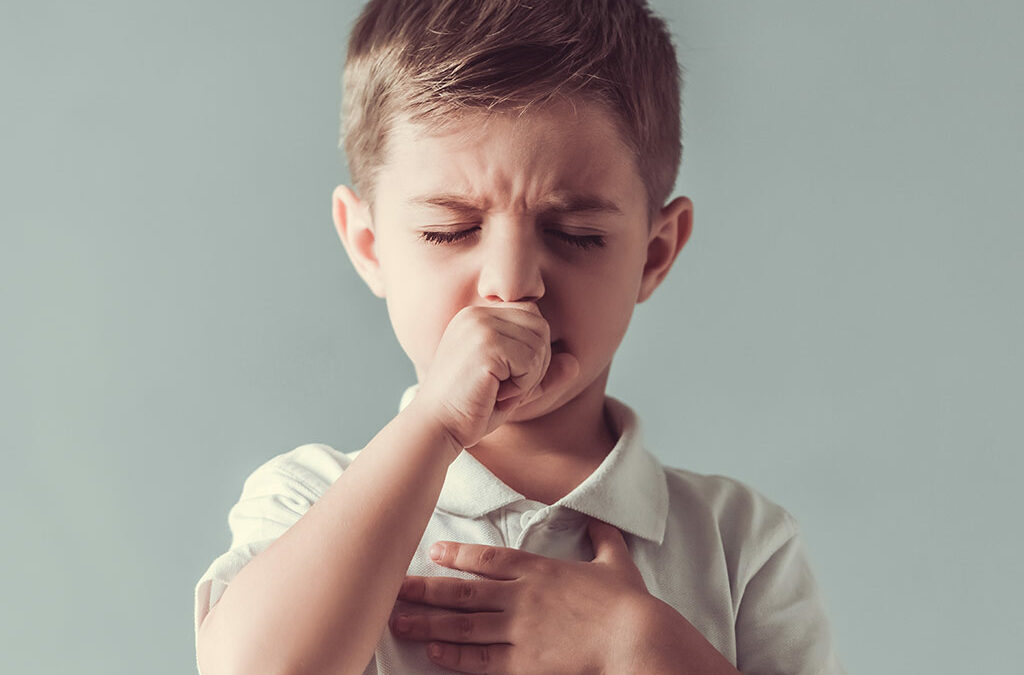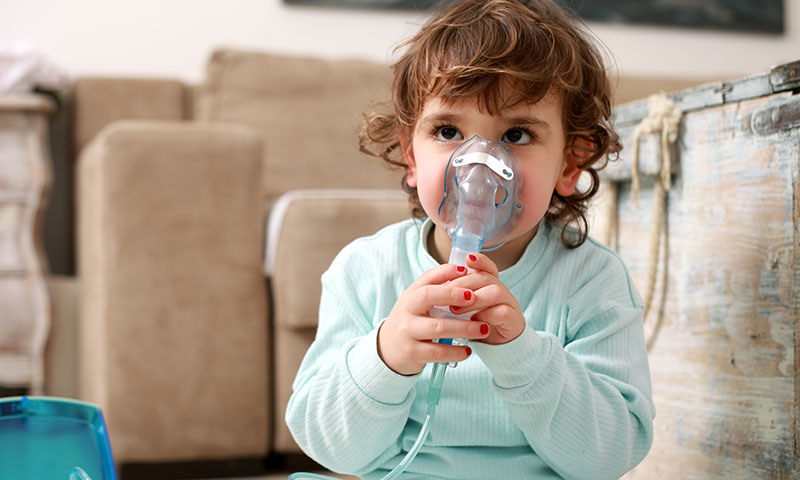For starters, asthma is a disease that affects the airways making it extremely difficult for a person to breathe. It makes some physical activities not only challenging but impossible to perform.
Asthma can happen to anyone at any age. Even your infant could be affected by this disease. In fact, Centers for Disease Control and Prevention (CDC) declared it to be one of the life-threatening diseases that are common among children and may even cause them severe health conditions.
To treat asthma in your child, you must understand its function, causes, symptoms, types, triggers, diagnosis, and different treatment options. Then create a long-term action plan to prevent this disease from affecting your child’s health.
So let’s get into it!
How Asthma Affects The Body?
Lungs use the air passages from your mouth and nose to get oxygen from them and provide it to the bloodstreams circulating in the entire body.
When asthma occurs, your body’s airways narrow down as it swells and inflames while producing a sticky substance called mucous, making it difficult for the air to pass through them.
The condition gets more critical, as coughing during asthma causes the use of more oxygen than usually required by the body. But due to lack of oxygen, it reduces its supply to the blood, causing your body organs (such as brains, liver, and others) to be damaged.
The worst-case scenario might even lead to severe asthma or may even suffer hypoxia. In both cases, you must immediately go to the emergency for treatment.
What Causes Asthma?
The development of asthma in your child may develop due to the following factors:
- Allergies – Increases the potential of developing asthma at a very young age, even the children in its infancy age.
- Genetics – A family history of asthma can also increase the risk of asthma in your child.
- Hygiene – There is a possibility that the baby’s immune system is not strong enough to fight the infectious bacteria in their early months, leading to the development of asthma or other allergic conditions.
- Infections – Respiratory infections may also increase the risk of asthma in children, especially if it’s frequent among children under five years old.
- Smoke – Exposure to smoke before or after the baby’s birth – the mother may have smoked during their pregnancy or when the child was very young.
It is important to note that most of the causes are related to the elements that may reside in the air and can get into your child’s airways through their mouth and nose. In contrast, others are related to the child’s weak immune system, which cannot fight the bacteria in your child’s air passage.
Asthma Symptoms
If your child has asthma, the most common symptoms that you may notice during your child’s daily activities include:
- Shortness of breath – your child might pause their daily life activities.
- Mild/Severe coughing – troubles them while sleeping and becomes worse at night.
- Chest tightness or pain – a child may complain about feeling like a sore tummy.
- Wheezing sound – you may hear it as a whistling sound when your child breathes.
- Slow recovery – from any respiratory infections such as flu and cold.
- Weakness/Fatigue – lack of energy or feel more tired than usual during any physical activity, even at their playtime.
Depending on your child’s age and activities, the symptoms may vary. However, your child may experience only a few of the mentioned symptoms. So, you must consult with your child’s doctor to provide early asthma prevention and its management.
If you are unable to notice the symptoms of asthma at the early stages, you may notice it later. The symptoms of severe asthma may also look like:
- Drastic fluctuations of the heart rate
- The appearance of a bluish tint on the lips
- Intense or severe shortness of breath
- Low blood pressure or hypotension
- State of confusion or feeling agitated
If asthma gets worse, then it can lead to hypoxia causing damage to various functions of your child’s body. So you must take your child to the hospital and treat them on priority.
Severity Levels
The National Asthma Education and Prevention Program (NAEPP) categorises asthma conditions based on their severity before their prevention and management plan. It may include:
- Intermittent level – The symptoms may last less than two days per week or month, while your child may carry on their daily life activities as usual.
- Mild level – Your child may experience the symptoms more than twice a week on alternative days per month, and it gets in the way of your child’s daily activities. Your child may also have trouble sleeping as well for up to four nights.
- Moderate level – Asthma symptoms may happen on a daily basis during the day and at least once at night per week while limiting some daily activities to avoid asthma triggers.
- Severe level – The asthma symptoms may trigger several times a day and frequently at nights while limiting most of your child’s daily activities.
Depending on the severity level of asthma that your child is suffering, it may help you and the doctors plan your child’s daily activities to prevent the asthma symptoms.
Triggers
Some of the common conditions that lead to initiate asthma symptoms in your child may include:
- Infections – Any respiratory infections, like common cold or flu, making it difficult to breathe, causes shortness and slow recovery.
- Physical Activity – Increased body movement during any physical activity may cause breathing difficulty.
- Air Pollutions – Exposure to smoke or other air pollutants, such as bonfires, industrial air waste, tobacco irritants in the air, etc.
- Allergies – Weak immune system may cause allergies to pollen, mould, fur, dust, a particular food, or other common allergens.
- Extreme weather – High humidity or low temperatures, that is, dry, cold or humid weathers
- Intense Emotions – Such emotions cause intense muscle movement like shouting, crying, and laughing.
- Gastroesophageal Reflux – After eating heavy or spicy food, the feeling of heartburn may cause an uncomfortable feeling in the airways.
Doctor Diagnosis
The doctors may diagnose the asthma condition of your child by the following procedures:
- Full medical review – You’ll be asked about the child’s previous medical history, family medical history and currently experienced symptoms, and other conditions that cause worse breathing experiencing (if any).
- Blood and skin tests – They’ll ask you to get your child’s blood or skin tests to check for allergies or other illnesses that are causing asthma symptoms to trigger.
- Chest X-Ray. Your child’s doctor may ask you to get a chest X-ray of your child to determine if the symptoms are due to asthma or other chest conditions.
A spirometer test checks the airways in your lungs, and it is the most common diagnostic tool to test the lungs function. But due to the nature and risk of this test, it is not recommended to be performed on young aged children.
Clinical Treatments
Up till now, there are no treatments developed for asthma. Instead, the doctors focus on preventing the symptoms and managing asthma conditions to keep them under control.
Some of the clinical treatments to control the asthma conditions of your child are:
- Quick-relief – These medicines help to relax the muscles of the body’s tight airways, making the air easily pass through them. Mostly, bronchodilators and first aid asthma treatments are used.
- Long-term controller – These medicines prevent asthma symptoms. Anticholinergics, anti-inflammatories, bronchodilators, and biologic therapy injectable drugs are prescribed to severe asthma patients.
Some kids with asthma only need quick-relief medicine; others need both kinds of medication to keep their asthma in check.
Prevention And Management
Following are a few of the features you can implement for your child’s health safety. It will significantly reduce the chances of an asthma attack. It may include:
- Regularly make your child take prescribed medication by their doctor to manage the asthma symptoms from triggering.
- Improve your child’s allergy resistance and immune system by getting allergy shots or immunotherapy.
- Avoid getting your child cold, flu and other asthma triggers by not using those products that have caused breathing difficulty in the past such as, smells, chemicals, etc.
- Keep your child’s environment clean to avoid getting any irritant elements in their airways.
- Use a humidifier to maintain 30% to 50% humidity in your child’s room to ensure that their room is not too dry.
- Regularly make your child exercise breathing to prevent hyperventilation while keeping their airways active.
- If your child is getting asthma treatment, then limit the physical activities such as playtime, sports, and other activities.
- Prepare an action plan to take measures when an asthma attack occurs to your child, such as sitting upright may help their airways open. Certain use of quick-reliever or any other medications might also help control their asthma conditions quicker.
However, you should get immediate medication attention for your child if their asthma conditions are out of control and no prevention method is working out for them.
Wrapping Up
Asthma can happen at any age. Their symptoms are hard to diagnose until they get worse. But once your child gets diagnosed with it, you must monitor their health and discuss it with the doctors.
There is no cure for asthma; only prevention and management methods may help control its symptoms. Depending on the severity level, the doctors may help with the long term prevention plan for your child to reduce the asthma symptoms.




Recent Comments